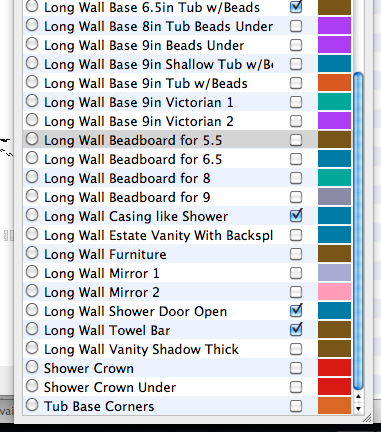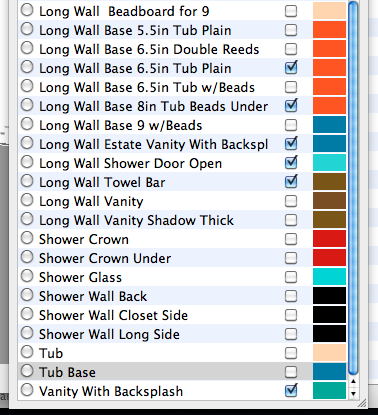Thank you everyone for your patience.
After reading TIG's response, I went back and followed the directions and came up with what I think Alan Fraiser came up with. The original sphere said "24" in the dimensional window, which fits with the 12 for the half that TIG said. I missed that part that he had been speaking of half of the sphere, and so entered 6 in the box and got something that didn't look much like a sphere. I did it again with 8 and ended up with a passable sphere that when put together looked like Alan Fraiser's example. (I'm still using SU7, so I couldn't check that yet, and I'm not ready to go to a new version of SU in the middle of this project.) Then I reread TIG's response and did it with 6 for the half, or 12 in the box, and that looks very much like a sphere.
With both revisions, I did the intersections and trimmed away all the extra bits, then also intersected 3 of the beads and trimmed away the place where they overlapped as well. I think the 8 (4 for the half) will be sufficient. 
I missed the part about making my final result into a component, so I will go back to do that, but I will have to remember to make the bead that will be sliced by my corner slicer (yea! I actually understood that part!) a different component before I trim it away, or won't it trim all of them?
(I love my corner slicer)
I also went back and changed the little coved part from a 12-sided arch to a 6-sided arch, and I've been softening up everything.
As to why I want to put all the little beads into it in the first place, I know it seems very silly and that I am putting in so much more work than necessary, I just feel more comfortable with it that way right now. This is my second project ever, and I am not used to how things turn out in the end yet. You guys are soooo good at this, and have had a lot of experience, and know just how much detail is needed. I'm not quite there yet. I need to make things hard first and then back off of them. Thank you for trying to help and get me there sooner, and thank you for being patient with me.
And I actually have put in many of the little details (hinges, tracks for the shower doors, floor tiles, etc.) as I have gone along because it helps me work through the process of how everything goes together. For example, when I did the shower tile, I put in every single one and accounted for the grout lines. Now that the tile is in, I have removed all that detail from the current model, but know for certain sure what the facsimile means that I put in its place. But it was very useful for me when it did it to see what kind of situations might arise before the tile guys got there, so I knew what I wanted for sure.
I also was able to print out many many views of the tile work (there were many different components) and tape them up to the walls for the tile guys to use. I want to be sure there were no misunderstandings as they worked. I was able to go over each one ahead of time and make the very few adjustments then, before they began mixing things, and they really liked being able to refer to the diagrams as they went. I was very pleased with how the tile came out.
Once I see that the beads are going to give the effect I am hoping for, then I can use something more vague if I want to, or I can leave them in and use close-up views for reference if needed.
Big Smile
So now I'm off to tweak my moulding and change the beads into components. Should each one be a component? or should I do them in groups of three or so?


